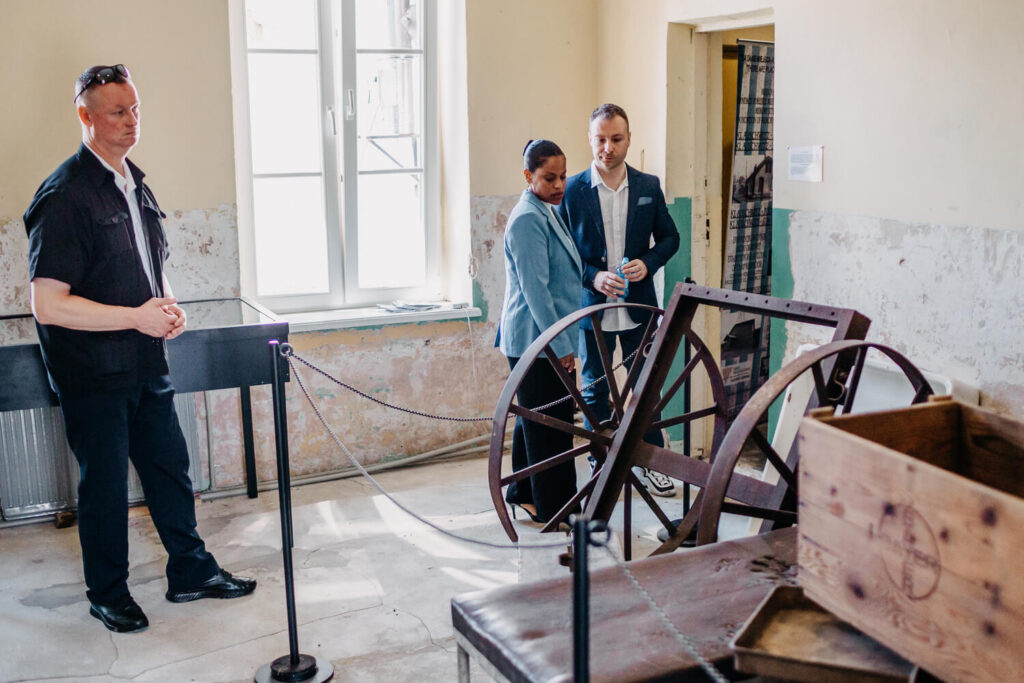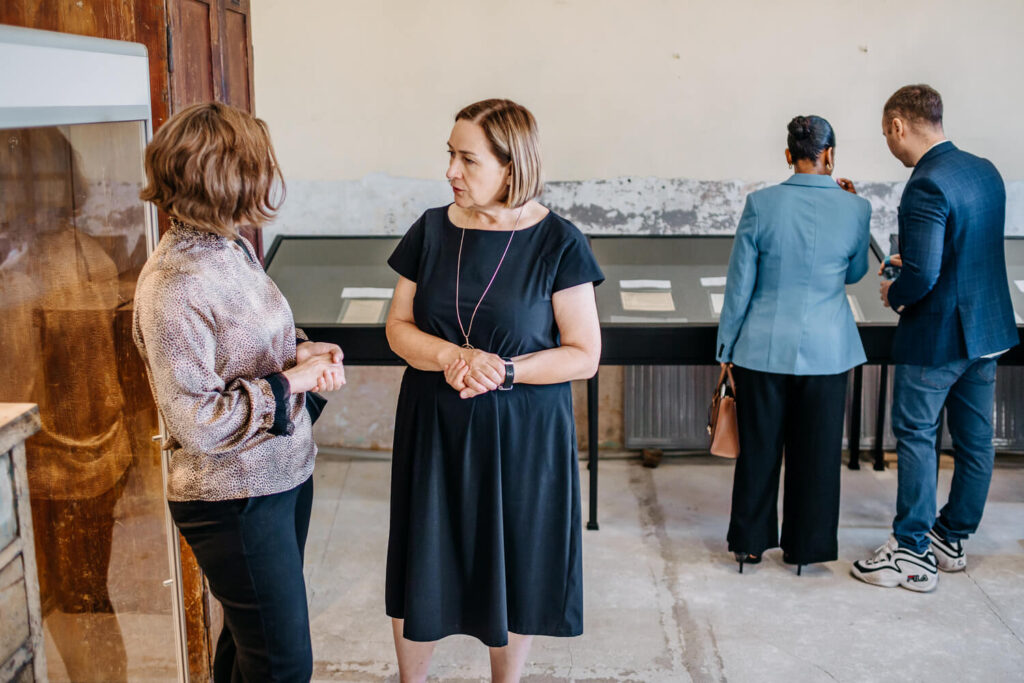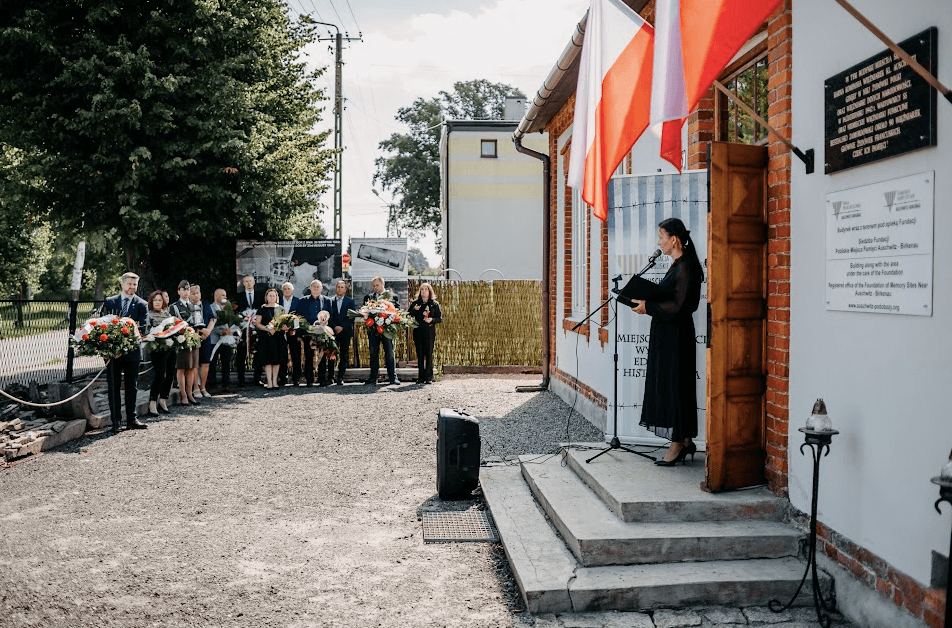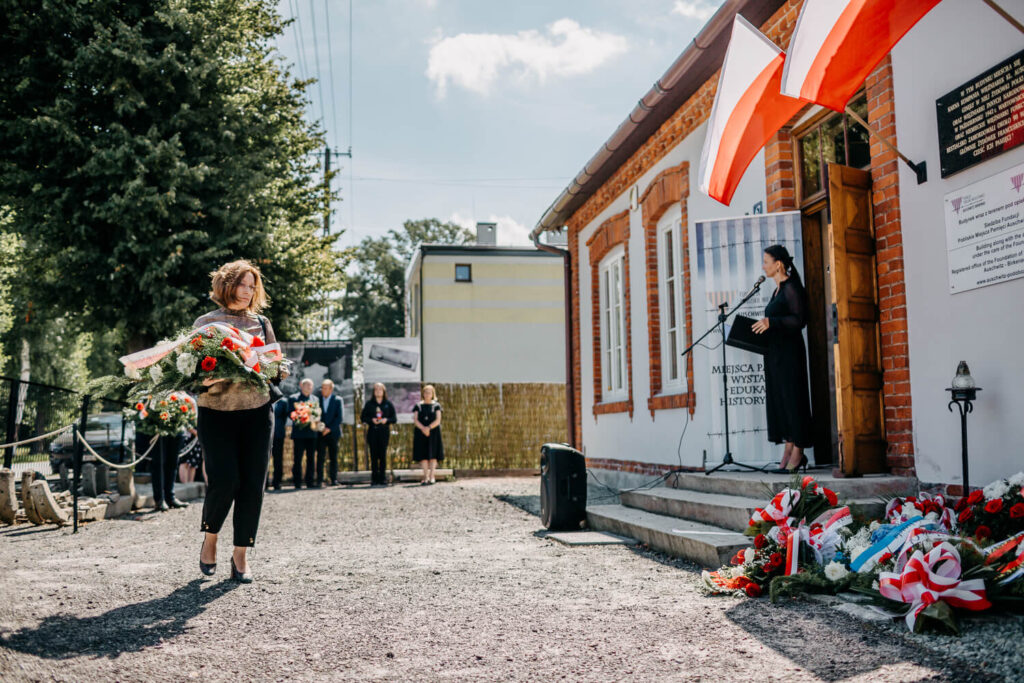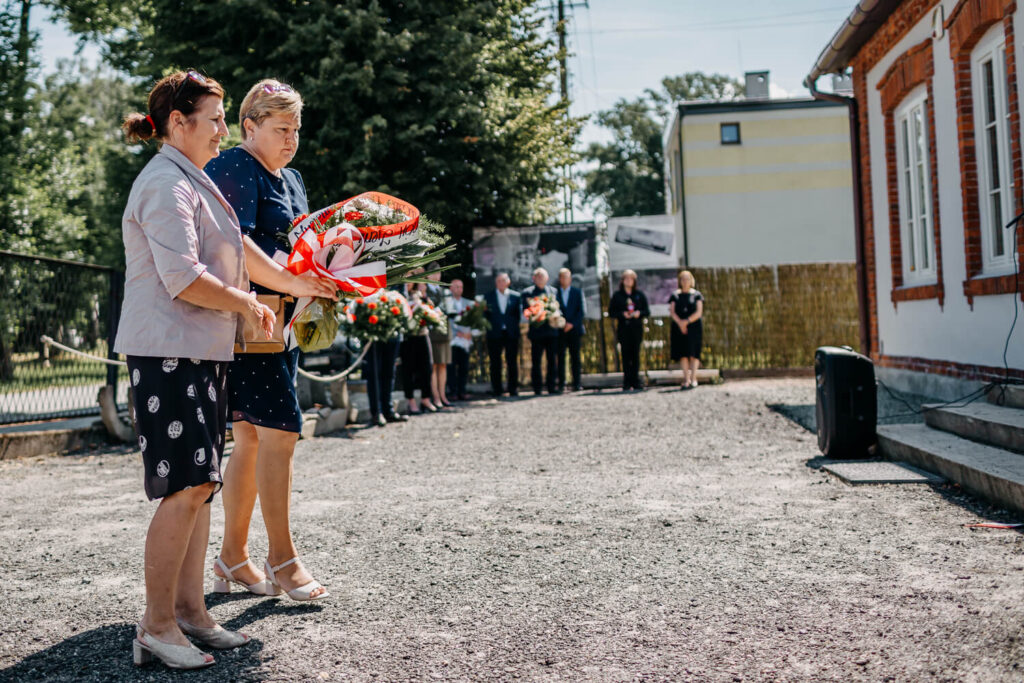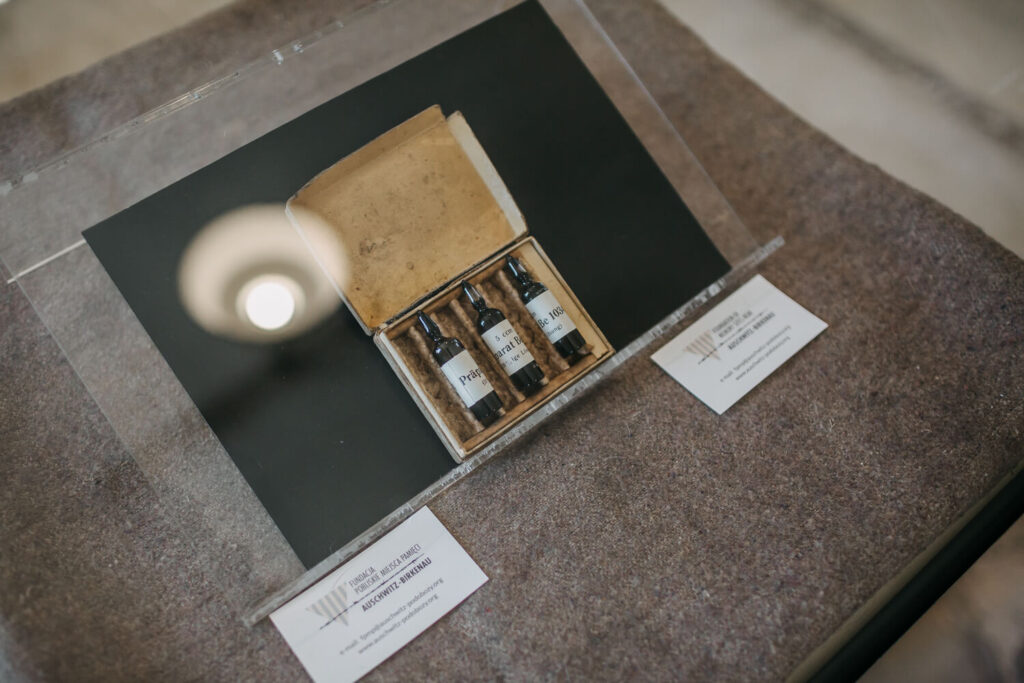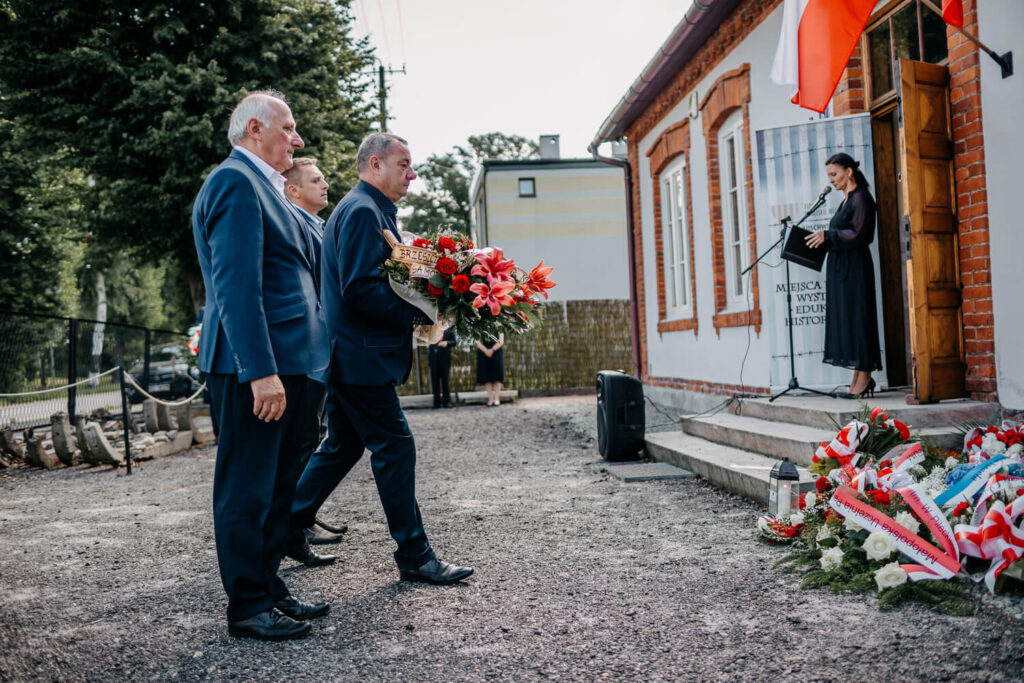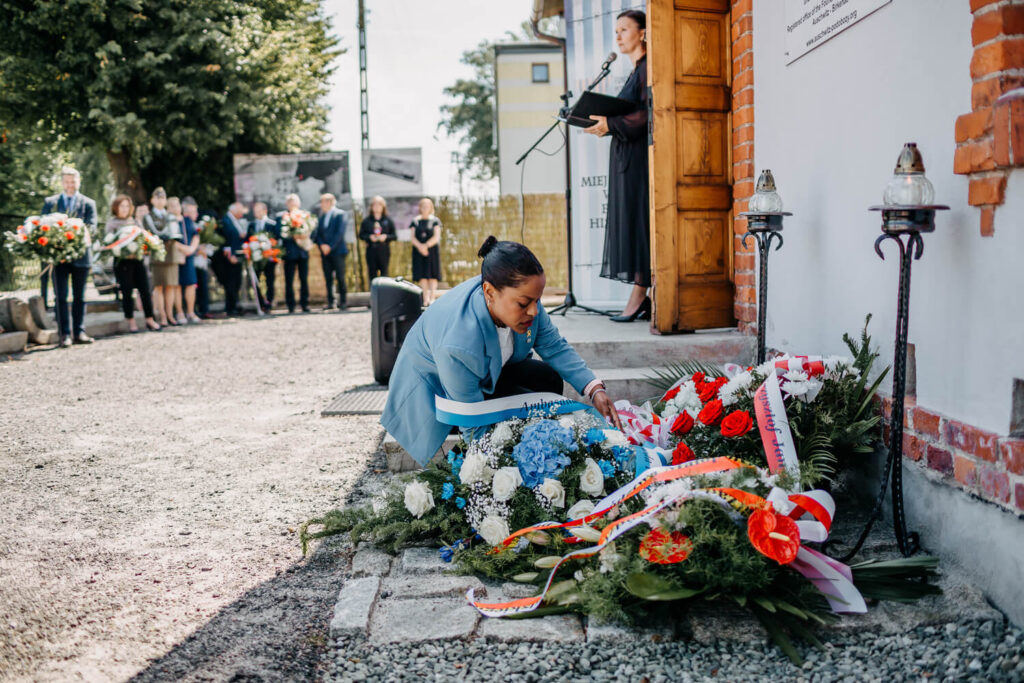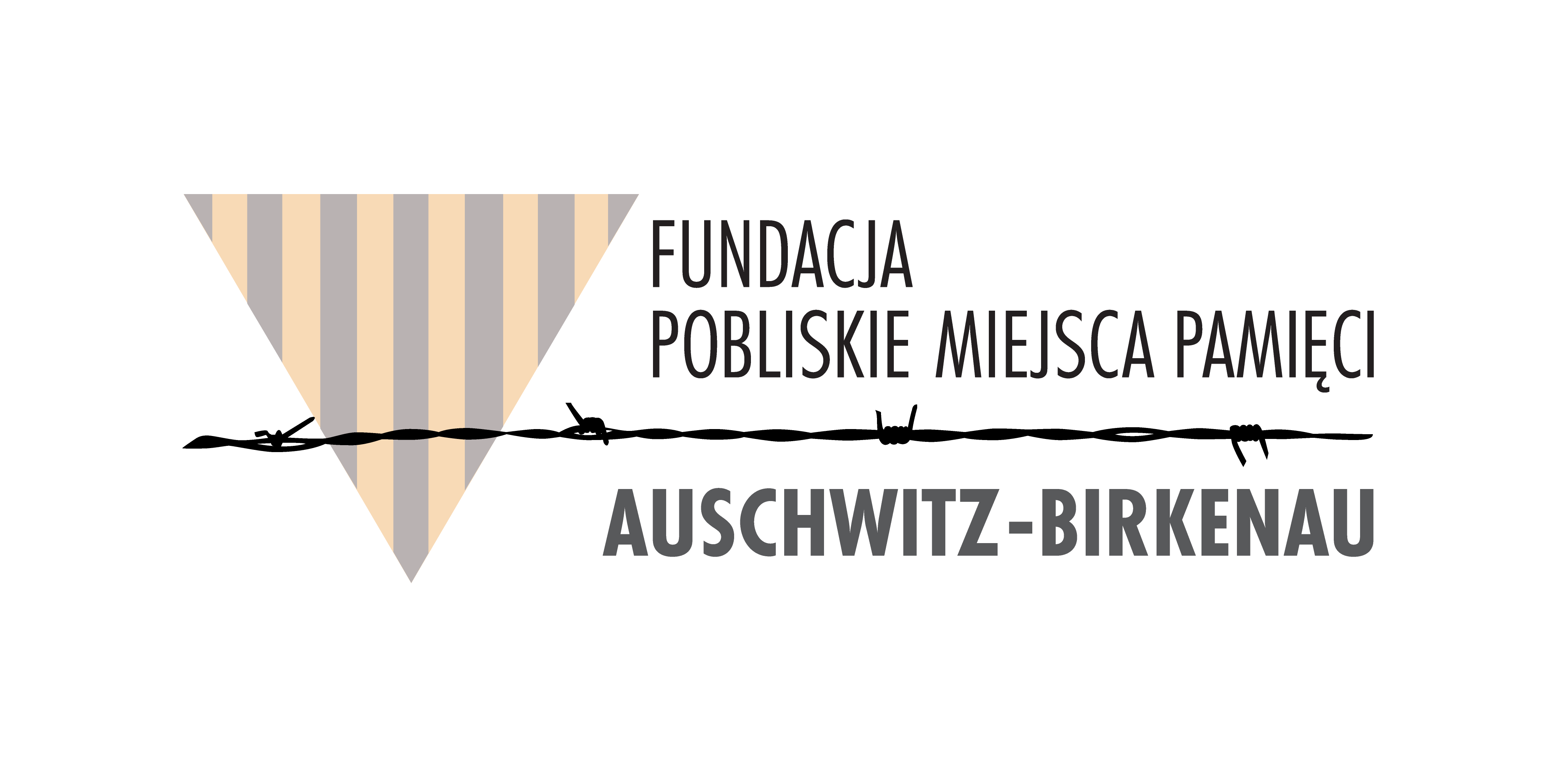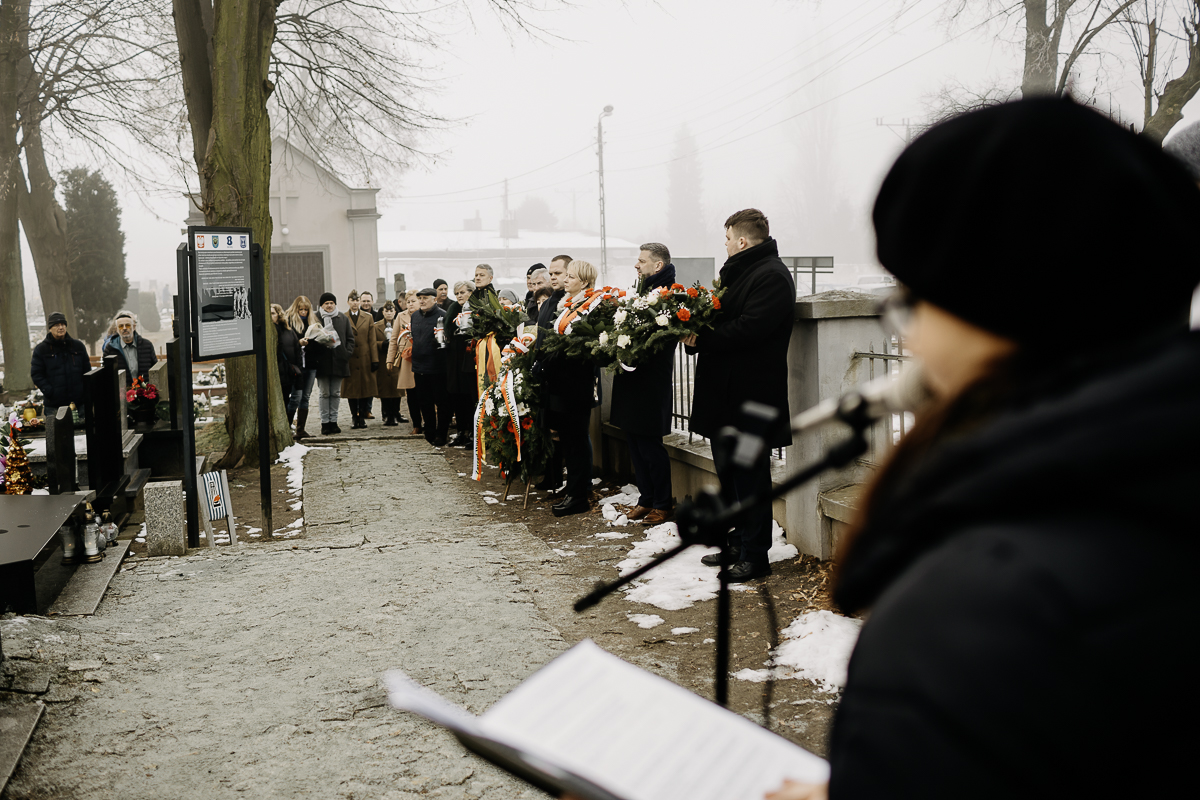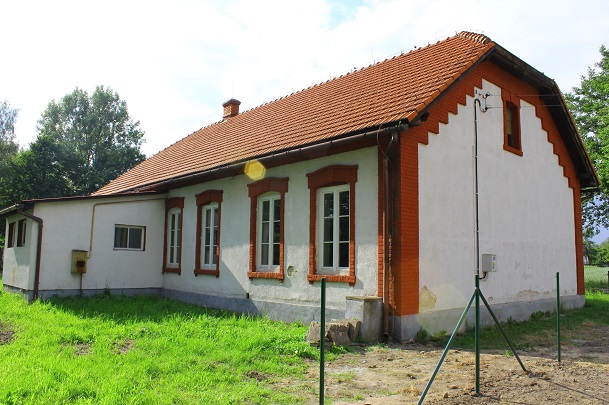On June 25th, we marked the 82nd anniversary of the establishment of the Women’s Penal Company KL Auschwitz-Bor/Budy. On this day, the main ceremonies took place in front of the historic building, a Place of Remembrance where the female prisoners from KL Auschwitz were housed. These ceremonies were organized by the Foundation for Nearby Places of Remembrance of Auschwitz-Birkenau.
As in previous years, the memory of these events was honored through a symbolic laying of flowers and lighting of candles, commemorating the creation of the subcamp KL Auschwitz Frauenstrafkompanie Bor/Budy. After the ceremonies, a temporary exhibition inside the building displayed several small glass ampoules containing substances produced by Bayer, seemingly insignificant but with a significant emotional impact, which we elaborate on below.
During the ceremonies, flowers and candles were laid by: Joanna Florkiewicz-Kamieniarczyk, Director of the Krakow Monument Conservation Office, representing the Małopolskie Voivode Krzysztof Jan Klęczar; Jakub Przewoźnik, Manager of the Małopolskie Voivodeship Office in Oświęcim, representing the Małopolskie Voivodeship Board; Teresa Jankowska, Deputy Starost of Oświęcim County; Radosław Szot, Mayor of Brzeszcze, along with Jacek Wawro, Vice-Chairman of the Brzeszcze Municipal Council, representing the Brzeszcze Municipality and Municipal Council; Mirosław Smolarek, Mayor of Oświęcim; Dr. Filip Musiał, Director of the Institute of National Remembrance in Kraków; Bosmat Baruch, Director of Public Diplomacy, representing the Israeli Ambassador Yakov Livne; Dr. Igor Bartosik, representing the Auschwitz-Birkenau State Museum; Captain Agnieszka Kierepka-Hoła from the Military Recruitment Center in Oświęcim; Maciej Zawadzki, Director of the Brzeszcze Cultural Center; Marek Gancarczyk and Maciej Puzoń, representing the Neighborhood Council No. 5; Dr. Katarzyna Wadoń-Kasprzak, Vice-Rector of the Witold Pilecki State College in Oświęcim; Dorota Mleczko, Director of the Museum of the Memory of the Inhabitants of the Oświęcim Land, along with a delegation; and the delegation from the Generation Association in Brzeszcze. The organizer of the event, Agnieszka Molenda-Kopijasz, President of the Foundation, and Radosław Szot, Mayor of Brzeszcze. Technical and medical support was provided by OSP Brzeszcze Bór.
According to historical sources, the establishment of the Women’s Penal Company was directly linked to the escape of Polish prisoner Janina Nowak from the female command of KL Auschwitz on June 24, 1942. In response, the Germans imposed collective punishment, shaving the heads of all 200 women in her command and transforming the command into a penal company. On June 25, these 200 women, including Slovaks, Russians, Ukrainians, Yugoslavs, Czechs, and Germans, were sent to the newly established penal subcamp in Bor/Budy.
The prisoners of the penal command worked in harsh conditions year-round, deepening and cleaning the edges of nearby ponds from reeds and cattails, working in the forest cutting trees, and performing most agricultural work on the surrounding fields. The brutal working conditions and cruel treatment by functional prisoners often led to death. In late August 1942, part of the women’s command was transferred to the female camp in KL Birkenau. Within less than two months of the penal subcamp’s establishment, only 137 of the 200 women from the first transport survived.
By March 1943, the women’s penal command was moved to the female camp in KL Birkenau, and a women’s subcamp KL Auschwitz Frauenlager Bor/Budy was established in its place.
Today, we remember the tragic fate of women in the German KL Auschwitz-Birkenau camp complex, not only through this singular external Women’s Penal Company but also through the criminal pseudo-medical experiments conducted on prisoners in Auschwitz and other former German Nazi concentration camps.
The temporary exhibition featured seemingly insignificant but original items from our collection related to the tragic history of KL Auschwitz. Three small original glass ampoules labeled Be 10 34, containing a Bayer product tested on prisoners in the KL Auschwitz-Birkenau complex against their will and under threat of death—known as “sending to the gas” for any resistance or evasion of the forced injection of this experimental substance.
Before the war and during the occupation, Bayer, along with BASF and Agfa, formed the large chemical conglomerate IG Farben.
As we know, Bayer still exists and operates today. Unfortunately, it is the same company that demanded prisoners from the KL Auschwitz camp for testing, subsequently killing them.
In remembering the tragic fate of female prisoners, we must also recall the dark history of the corporations and companies that worked with the SS in German concentration and extermination camps, such as the well-known Bayer.
…IF AUSCHWITZ IS TO BE CONSIDERED HELL, THEN BOR/BUDY WAS ITS LOWEST CIRCLE….
